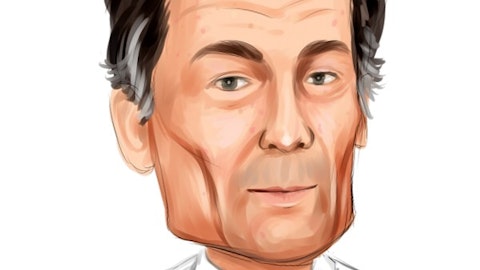
Soon after this, Carl Icahn made his move, building a 7.5% stake in the company throughout the second quarter. At the same time, another high profile manager and Chesapeake’s largest shareholder, Mason Hawkins’ Southeastern Asset Management boosted its total ownership in the company to 13.5%. Chesapeake makes up almost 9% of Icahn’s 13F portfolio and 7% of Hawkins’ 13F portfolio. There are five funds that we follow who have over 7% of their 13F portfolio exposed to Chesapeake (see all funds that own Chesapeake here). Meanwhile other big names took notice and added Chesapeake to their 13F portfolio in the second quarter, including John Rogers of Ariel Investments and Steven Cohen of SAC Capital.
Since McClendon’s recent activities involving loans taken against his FWPP interests, and other stories involving McClendon’s less than kosher personal finances, including dealings with EIG Global Energy Partners and loans made from Wells Fargo and Goldman Sachs, investors have acknowledged a need for change. We acknowledge, and believe that Icahn and Hawkins agree, that McClendon has done an above average job of positioning the company with respect to assets, but as the company transitions to the development stage it may well need another leader.
Along with this are the concerns over liquidity and debt obligations. Chesapeake has for the large part focused on acreage accumulation versus cash generation. A successful execution of the asset sale program will allow the company to increase liquidity and meet debt obligations, with Chesapeake accelerating anticipated asset sales to ensure the ability to meet debt obligations. During its second quarter earnings call, the company reiterated definitive agreements for asset sales equaling roughly $6.9 billion. This should allow the company to fulfill its asset sale target of $13-$14 billion for 2012, while allowing the company to focus on its targeted asset sales of $4.6 billion for 2013.
The concern going forward for asset sales is that the market may well become flooded with other companies looking to raise capital, such as Plains Exploration & Production Company (NYSE:PXP), who is looking to swap its shale assets for deepwater assets. Plains is moving from being a Chesapeake competitor and has recently purchased deepwater Gulf oilfields, while continuing to look to offload its shale gas assets.
The company’s second quarter EPS missed consensus estimates of $0.08 and came in at $0.06, but the company did announce a cut in its 2013 CapEx budget by nearly $1.3 billion. Production was up 25% from Q1 2012 and 4% from Q2 2011. Chesapeake has been free cash flow positive in only two of the twenty-one years that the company has been public. Management expects to finally achieve a sustainable free cash flow in 2014, when it expects to produce $7 billion in operating cash flow.
The company has opted to make its hedging program a lesser part of its operations and believes firmly that natural gas will return to $5 per MMBtu in the interim. There is a risk to this, should gas prices remain low the company’s funding gap may be larger than it expects and the company may have to make additional asset sales.
The company is in competition with EOG Resources, Inc. (NYSE:EOG), Apache Corporation (NYSE:APA) and Pioneer Natural Resources (NYSE:PXD). Chesapeake has leveraged itself greatly, having a debt-to-equity ratio that is well above its competitors. Chesapeake operates with a debt-to-equity ratio of 1.06, while EOG’s ratio is 0.4, Apache’s 0.23 and Pioneer’s 0.60. These above average debt levels have also forced the company to trade at a discount to its competitors on a P/E and P/B basis: Chesapeake having a P/E of 6.6 and P/B 0.9, while EOG trades at a 22.5 P/E and 2.3 P/B; Apache 11.1 P/E and 1.2 P/B; and Pioneer 35.4 P/E and 2.5 P/B.
Chesapeake is up over 15% the past three months as the company has made plans to transition from acting mainly as an acquirer of properties to a producer and developer of its unconventional assets. The company plans to increase production by 25% in the coming year. The company’s trailing P/E is 6.6, but the forward P/E is 16, which is indicative of the company’s upcoming transition to capitalizing on its assets.
Icahn has a track record of being unyielding. He appears to have Hawkins in his corner, together owning over 20% of the company. If Icahn and Hawkins can put enough pressure on the company to instill operational and management changes Chesapeake may well be able to finally take advantage of its rich asset base. Chesapeake has seen significant changes, in part thanks Ichan and Hawkins’ pressure. The company has seen a new independent chairman appointed and four new independent directors, as well as a new plan to reduce debt. The next big challenge is for Icahn and Hawkins to inspire true operational change, which we believe they can do. Chesapeake continues to pay a steady quarterly dividend that yields 1.7% and sees no need in suspending the dividend in the near future.





